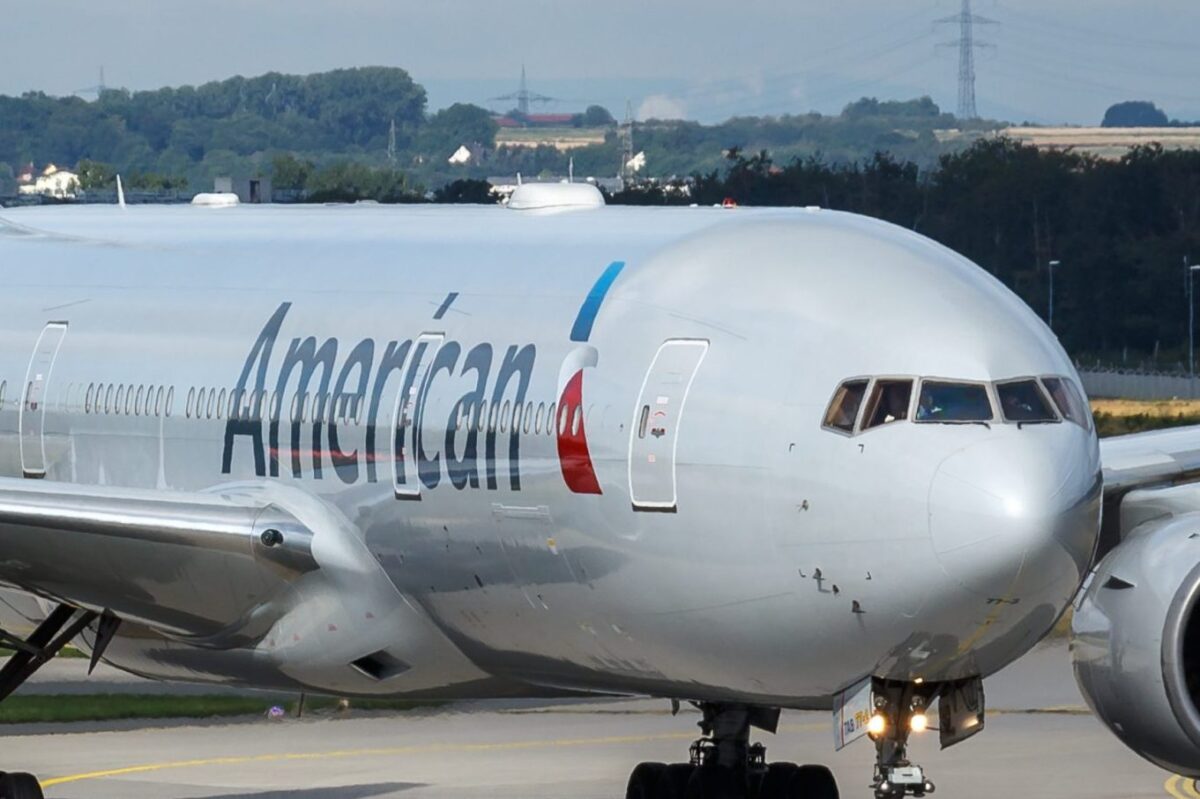American Airlines Sees First Full Year of Profitability Since 2019

Photo Credit: American Airlines is seeing its best post-holiday booking cycle ever. Wikimedia Commons / TJDarmstadt
Skift Take
The expenses at American Airlines were billions higher in 2022, but so was revenue, making the year an overall success looking at dollars alone.
Despite a number of constraints in the aviation industry, American Airlines has achieved a full year of profitability for the first time since 2019.
The airline had a total revenue in 2022 of $49 billion, an increase of 7 percent over 2019, and a total net income of $803 million — all while flying 8.7 percent less capacity. And that is despite a $1.9 billion pretax loss in the first quarter.
It was also the best fourth quarter the company has ever had, with a total revenue of $13.2 billion, an increase of 16.6 percent from in 2019.
Airline executives shared the details during a quarterly earnings call Thursday morning.
“Key to our success has been sizing our airline for the resources we have available and the operating conditions we expect to encounter. And we will continue to do that going forward,” said American CEO Robert Isom.
Now, post-holiday bookings are the strongest they have ever been, said Robert Isom, CEO of American. Demand for domestic and short-haul international flights is leading that business, and international flights are expected to increase this year.
Even with the financial uptick, American is still working against multiple post-pandemic issues — including a workforce shortage, supplier constraints, and higher expenses — that will affect growth and operations over the next year.
Higher Costs and Resource Constraints
American spent $13.8 billion on fuel and related taxes in 2022. It was $6.8 billion in 2021.
Total operating expenses were $47.4 billion in 2022, up from $30.9 billion in 2021.
The biggest cost right now is that the fleet is not being utilized at the level it should be, Isom said. That is being addressed in part by modernizing and simplifying feet, but there are other opportunities that can offset those costs, like airport rent, landing fees, and maintenance.
“The fleet’s meant to be flown. Those are the areas I would probably look to most as being opportunities for us to see much greater efficiency,” said Devon May, chief financial officer for American.
American is also experiencing upfront costs as it goes through a big hiring phase to replace retiring pilots and other workers.
The company is considering those multiple factors as it plans for the year.
“What is different from times past is we have been very conscious in Q1 about how we use the airline’s resources — it's people, it's planes, it's facilities, everything — largely so that we can have as much of that capacity for the summer peak as possible,” said Vasu Raja, chief commercial officer for American.
Still, American is making progress in its effort to pay down $15 billion in debt by the end of 2025. The company has now reduced its total debt by $8.2 billion and expects to pay down another $3.3 billion this year.
Fleet Modernization
American expects to add 23 airplanes to its fleet this year, 12 of which are financed.
That is fewer than the airline had been planning, however.
Despite Boeing’s contractual commitment to deliver 27 Boeing 737 MAX aircraft in 2023, the airplane manufacturer has informed American that it will deliver 17 this year, said Derek Kerr, president of American Eagle.
“This change in timing will shift planned [capital expenditure] out of 2023 and into future years,” Kerr said.
In August, American started receiving Boeing 787-8 planes for the first time in 15 months. American obtained five 787-8 planes during the last quarter, and four more are expected in the first half of 2023. Boeing 787-9 planes are expected to be delivered starting in the fourth quarter.
“What we have now is aircraft manufacturers that are just starting to get their feet back under them,” Isom said.
“We continue to work with both Airbus and Boeing to make sure that we encourage them in an appropriate fashion to deliver on time. And I know that they're working hard to make sure that they can meet our needs.”
American has shed 50 long-haul aircraft over the last few years, many of which were inefficient planes like the 757 or 767, he said. The company has also simplified the airline to four fleet types and has increased seating capacity in its existing fleet.
It’s part of the airline’s ongoing work to simplify and modernize the fleet, which executives said will ultimately lead to higher aircraft utilization that will offset investment costs.
“What that enables us to do is in the fleet that's left, we can much more dynamically alter schedules to follow where the demand is,” Raja said. “We can produce schedules that … are a lot more operable and, frankly, a lot more efficient. We've seen the benefits of that in our recent revenue performance, and we anticipate the benefits of that in the year ahead.”
The airline has also been working on investments in technology to track crew location and maintenance requirements, as well as tech that can help the company more efficiently manage big events like winter storms.
Hiring and Workforce Shortage
American has hired 40,000 people over the last two years.
That includes hundreds of pilots, with plans to hire 2,000 this year to replace a large number of retiring pilots. There were nearly 900 retirements last year, and 2023 will likely have around the same.
“We're going through the greatest training cycle of pilots that we've ever experienced,” Isom said. “So we're stretching our training resources like we've never before. But fortunately, we planned for this.”
American and the rest of the industry is combatting a pilot shortage.
“American took the monumental step last year of greatly increasing regional pilot pay. And I think that is the biggest thing that any company can do, and has done, to actually get the pump primed and people flowing back in,” Isom said. “And we're seeing that. We've stabilized the pilot ranks in our regionals, and we see potential growth as we come through the end of the year.”


